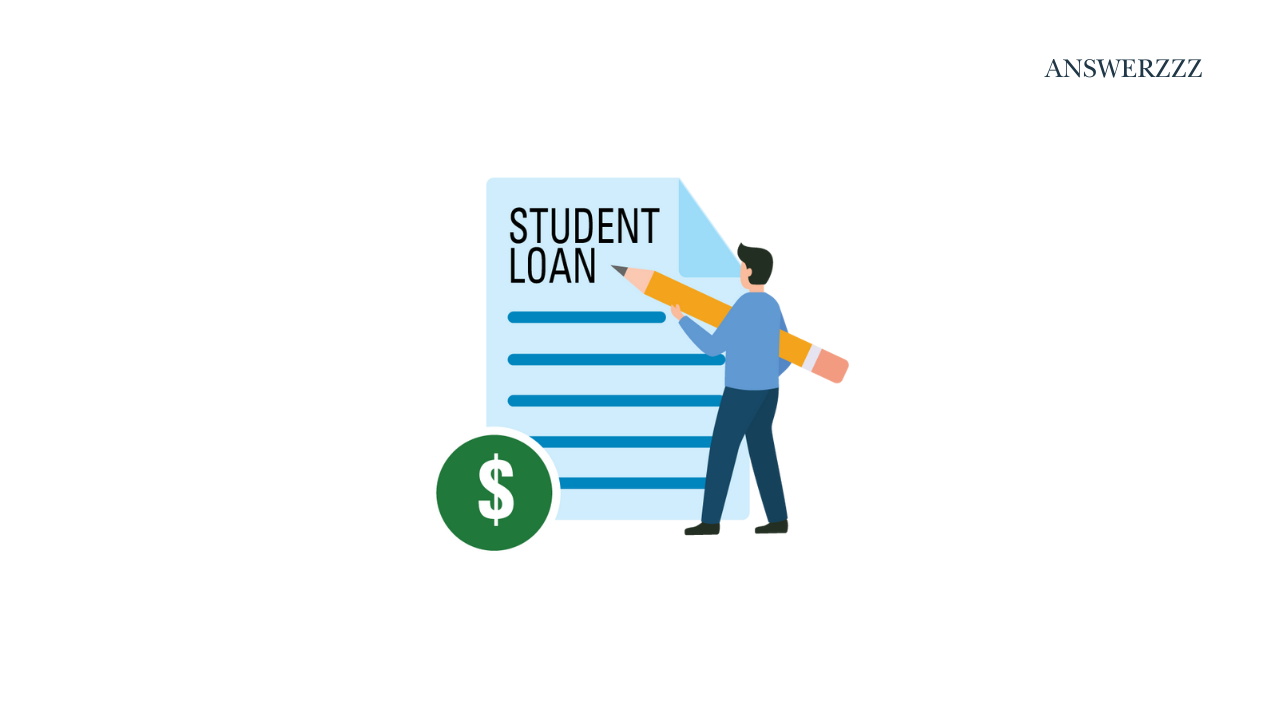Student loans remain a significant financial burden for many graduates, and with the changing landscape of higher education costs and loan policies, it’s essential to stay informed about the best ways to manage student debt effectively. As we enter 2025, new repayment options, interest rates, and forgiveness programs will provide opportunities for borrowers to take control of their financial futures. This article will provide practical strategies to manage student loans effectively, helping you navigate the challenges of student debt while preparing for a more secure financial future.
Understanding Your Student Loans: Know What You Owe

Before diving into repayment strategies, it’s crucial to understand the full scope of your student loans. Knowing exactly what you owe—along with the terms, interest rates, and repayment schedules—will give you the foundation you need to make informed decisions.
1. Identify the Types of Loans You Have
Student loans come in several different types, including federal loans, private loans, and sometimes state loans. Federal loans, such as Direct Subsidized and Unsubsidized Loans, typically offer lower interest rates and more flexible repayment options. Private loans, on the other hand, may come with higher interest rates and fewer borrower protections.
To manage your loans effectively in 2025, start by listing each loan, including:
- The loan type (federal or private)
- The loan servicer (the company responsible for managing your loan)
- The interest rate
- The loan balance
- Repayment terms (fixed or variable)
2. Review Your Loan Forgiveness Eligibility
If you have federal loans, it’s essential to understand if you qualify for any forgiveness programs, such as Public Service Loan Forgiveness (PSLF) or Teacher Loan Forgiveness. As of 2025, new developments or changes to forgiveness programs may affect eligibility, so stay updated on the latest federal student loan policies.
Creating a Student Loan Repayment Plan
Retirement Planning in 2025: Tips for Building a Secure Future
With the knowledge of what you owe, the next step is to create a repayment plan. An effective strategy requires planning, discipline, and an understanding of your financial situation.
3. Choose the Right Repayment Plan
One of the most important steps in managing student loans is selecting the right repayment plan. In 2025, the U.S. Department of Education will offer several repayment plans, each designed to suit different financial situations. These include:
- Standard Repayment Plan: The default plan for federal loans. It offers fixed monthly payments over 10 years and is often the best option for those who can afford to pay more each month.
- Income-Driven Repayment Plans (IDR): These plans adjust your monthly payments based on your income and family size. Popular IDR options include Income-Based Repayment (IBR), Income-Contingent Repayment (ICR), Pay As You Earn (PAYE), and Revised Pay As You Earn (REPAYE). These plans can be beneficial for individuals with fluctuating incomes or those who need a lower monthly payment to make ends meet.
- Graduated Repayment Plan: Payments start lower and gradually increase every two years. This plan works well for borrowers who expect their income to rise over time.
- Extended Repayment Plan: This plan extends the repayment term beyond 10 years, lowering monthly payments but potentially increasing the total interest paid over time.
If you are uncertain about which plan is right for you, use the U.S. Department of Education’s Loan Simulator to help guide your decision.
4. Refinance to Lower Interest Rates (But Consider the Risks)
Refinancing your student loans involves taking out a new loan to pay off your existing loans. The goal is to secure a lower interest rate, which can help reduce your monthly payments and save you money in the long run.
Refinancing can be a great option if you have strong credit and a steady income. However, it’s important to understand that refinancing federal loans with a private lender means losing access to federal protections, such as income-driven repayment options and loan forgiveness programs.
5. Consider Loan Consolidation
Federal loan consolidation allows you to combine multiple federal student loans into one loan with a fixed interest rate based on the average of your current rates. Consolidation can simplify your payments by combining everything into one monthly payment, and it can also give you access to certain repayment options that may not be available with individual loans.
However, like refinancing, consolidation has its downsides. You may lose some borrower benefits, such as loan cancellation options for certain types of federal loans. So, weigh the pros and cons carefully before consolidating.
Repayment Strategies to Pay Off Student Loans Faster

If you’re committed to paying off your student loans faster, there are several strategies you can employ to reduce the amount of interest you pay and shorten the loan term.
6. Make Extra Payments
The simplest way to pay off student loans faster is to make extra payments. This can be done by paying more than the minimum required amount each month. By applying any extra funds to the principal, you reduce the overall balance, which in turn reduces the interest you’ll pay over time.
Some ways to make extra payments include:
- Round up your payments: If your payment is $350, consider rounding it up to $400. The extra $50 will go directly to the principal.
- Make biweekly payments: Instead of making one monthly payment, consider splitting your monthly payment in half and paying every two weeks. This will result in one extra payment each year and help you pay down your loan faster.
- Use windfalls: Apply tax refunds, bonuses, or any unexpected financial windfalls toward your loans. These lump sums can significantly reduce your principal.
7. Target High-Interest Loans First (The Debt Avalanche Method)
If you have multiple loans, consider using the debt avalanche method to prioritize paying off loans with the highest interest rates first. This method minimizes the amount of interest you’ll pay over time and can help you pay off your loans faster.
While it might be tempting to pay off smaller loans first (the debt snowball method), the debt avalanche method is often the most cost-effective in the long run.
8. Automate Your Payments for a Discount
Many loan servicers offer an interest rate reduction of 0.25% if you set up automatic payments. Although this might not seem like much, it can add up over time, especially for large loans.
Stay Informed About New Developments
In 2025, student loan policies are likely to evolve, particularly with ongoing debates over the future of student debt relief, interest rates, and loan forgiveness. It’s essential to stay informed about these changes to make the best decisions for your financial future.
Mastering Credit Scores: Tips for 2025 to Boost Your Financial Health
9. Monitor Interest Rates and Inflation
Interest rates on federal student loans are subject to change based on inflation and federal economic policies. While you cannot control these fluctuations, you can make adjustments to your repayment strategy accordingly. If interest rates rise, consider consolidating or refinancing to lock in a lower rate, or make extra payments to reduce your balance before rates increase further.
10. Use the Student Loan Forgiveness Programs Wisely
Student loan forgiveness programs, such as Public Service Loan Forgiveness (PSLF), are still available in 2025. If you are employed by a qualifying public service organization, you may be eligible to have your loans forgiven after making 120 qualifying payments.
Similarly, Teacher Loan Forgiveness offers forgiveness for teachers who work in low-income schools. Be sure to track your qualifying payments, submit the necessary forms, and stay up to date on any changes to these programs.
Building a Financial Safety Net
Managing student loans is just one part of your overall financial picture. As you focus on repaying your loans, it’s also essential to build a financial safety net to protect yourself from unexpected expenses and future financial challenges.

11. Build an Emergency Fund
An emergency fund is a financial cushion that can help you avoid falling behind on your loan payments in case of unforeseen circumstances, such as job loss or medical emergencies. Aim to save at least three to six months of living expenses in a liquid, easily accessible account.
12. Budget Effectively
In 2025, using a comprehensive budget will be essential to managing your student loans while ensuring your other financial goals are met. A budget allows you to allocate enough funds for loan payments while saving for future goals, such as retirement or homeownership.
Consider using budgeting apps like Mint or YNAB (You Need a Budget) to track your spending and optimize your financial strategy.
The Bottom Line: Take Control of Your Student Loan Debt
Managing student loans effectively in 2025 requires a clear understanding of your loan details, choosing the right repayment options, and staying informed about changes in federal loan policies. By employing these strategies—whether it’s refinancing, prioritizing high-interest loans, or taking advantage of forgiveness programs—you can reduce your debt faster and work toward financial freedom.
In addition, building an emergency fund and maintaining a solid budget will provide financial stability, ensuring that you can weather unexpected challenges without falling behind on loan payments.

Ultimately, the key to managing student loans effectively is proactive planning, consistent repayment, and the willingness to adjust your strategy as necessary to stay on top of your finances. By taking these steps, you can pave the way toward a debt-free future.



